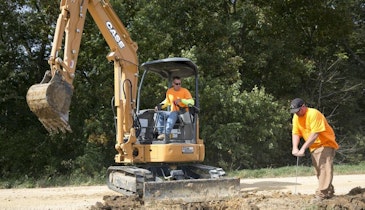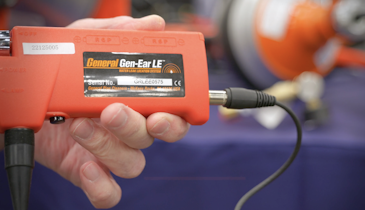Interested in Onsite Systems?
Get Onsite Systems articles, news and videos right in your inbox! Sign up now.
Onsite Systems + Get AlertsTo the Editor:
I have read your articles on tank deterioration in the past. Here’s my two cents:
My brother and I have owned Modern Septic Services for 25 years. We purchased the company from an uncle who started it in 1960, but was in the industry for many years prior to that. This subject has been discussed among ourselves, competitors, installers, homeowners and industry association members. The only two factors I believe affect deterioration are:
Concentration of hydrogen sulfide and duration of contact
I assumed most of the hydrogen sulfide is created in the leach field because the worst decay is over and around the outlet tee, spreading to a lesser degree in all directions. The exception is the baffle wall, which is attacked from both sides. Locating the leaching system at a significantly lower elevation on the property seems to increase decay. In 1967, the code changed from distribution box to serial systems. I have never seen a concrete d-box intact.
Quality of concrete
Prior to 1960, most of the tanks in this area were built on site. It is not unusual to see old tanks in good shape with precast riser grade rings installed 40 years later that are falling apart. Standing three storm drainpipes on end and pouring a floor in and tank top on them was a common practice. The tank tops starting with the third compartment are badly decayed, while the walls show little or no decay.
In 1960, precast tanks became common. One manufacturer quickly became the dominant supplier in our county. The tanks installed from 1960 through the mid- to late 1970s held up pretty well. Tanks installed after that decayed rapidly.
In 1995, code changed to allow an open tee for an inlet, as opposed to a 90-degree elbow or plugged tee. I have not noticed any advantage, as tanks currently being pumped for the first time three to five years after installation show significant decay. San Diego County used to require coating with emulsion inside of the tanks to a point below operating level, but abandoned this practice with the supposed advance in cement.
It’s hard to make any judgment on tanks completely formed and poured in place since many were hand-mixed, poured too wet, too dry, not rich enough, or were not vibrated properly. Yet we still find 50- to 60-year-old tanks in great shape. We notice a wide range of decay in both effluent and sewer lift stations.
The general consensus is that this is a concrete quality issue.
Don Craighead
Modern Septic Services Inc.
El Cajon, Calif.





